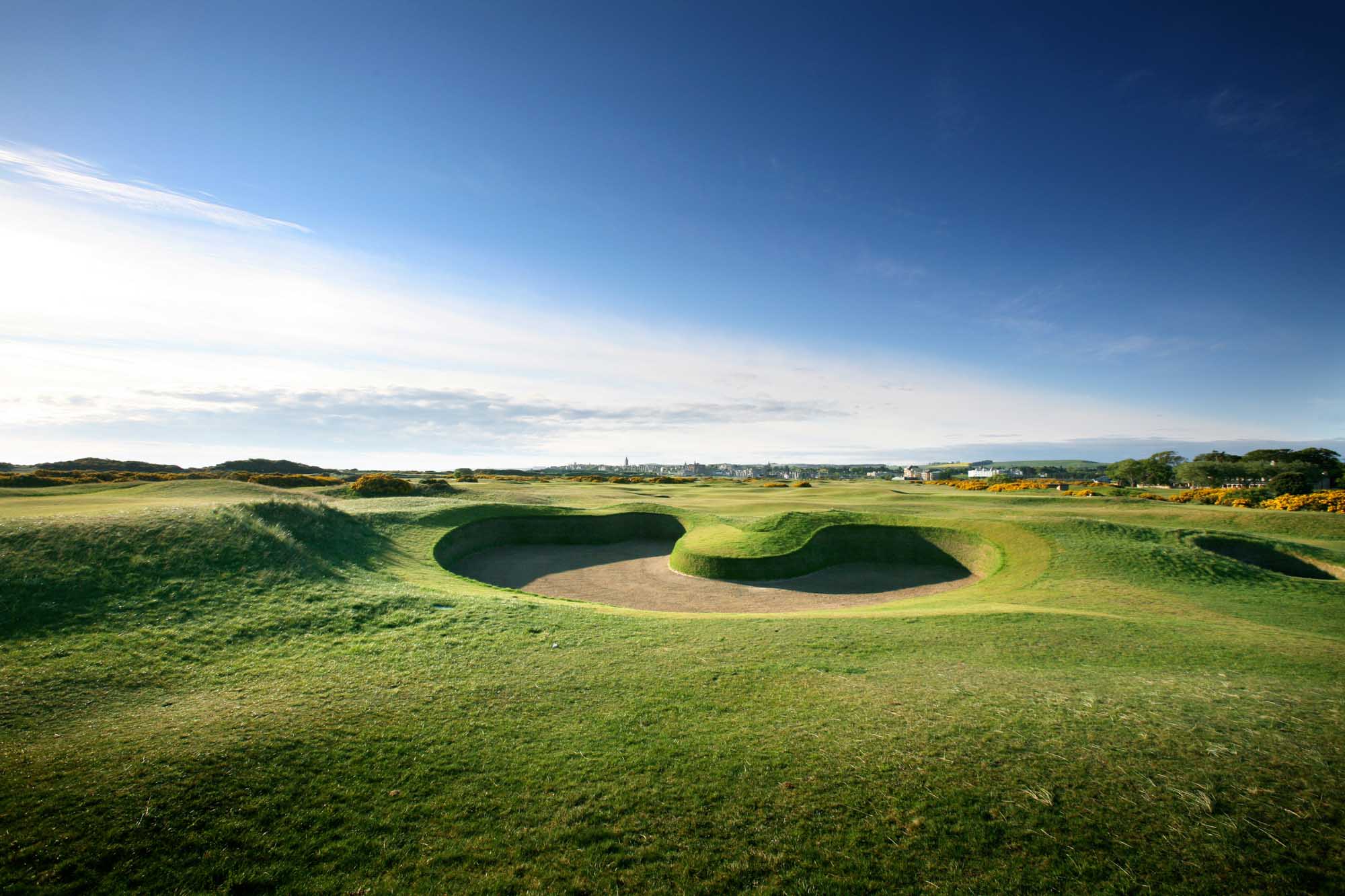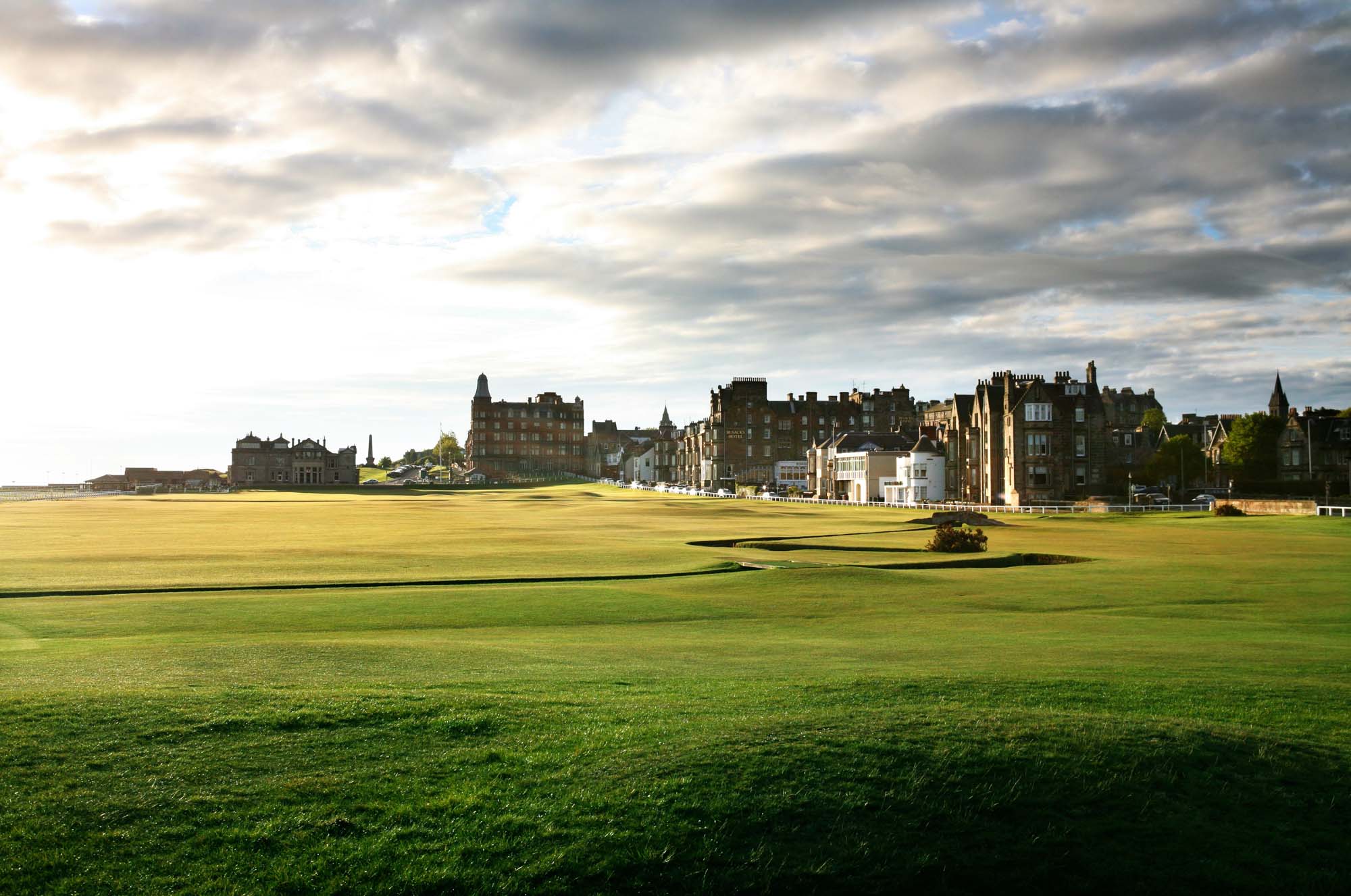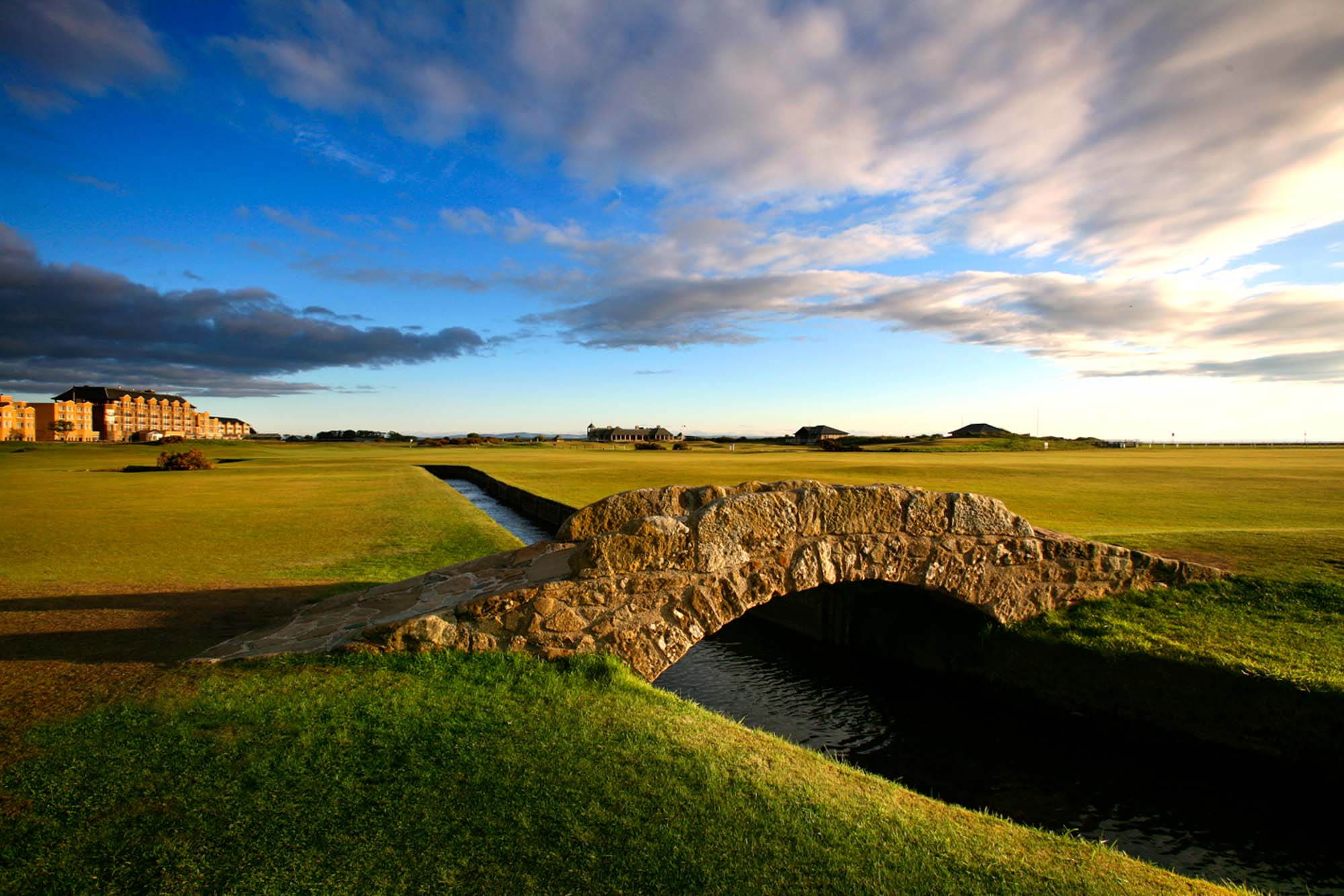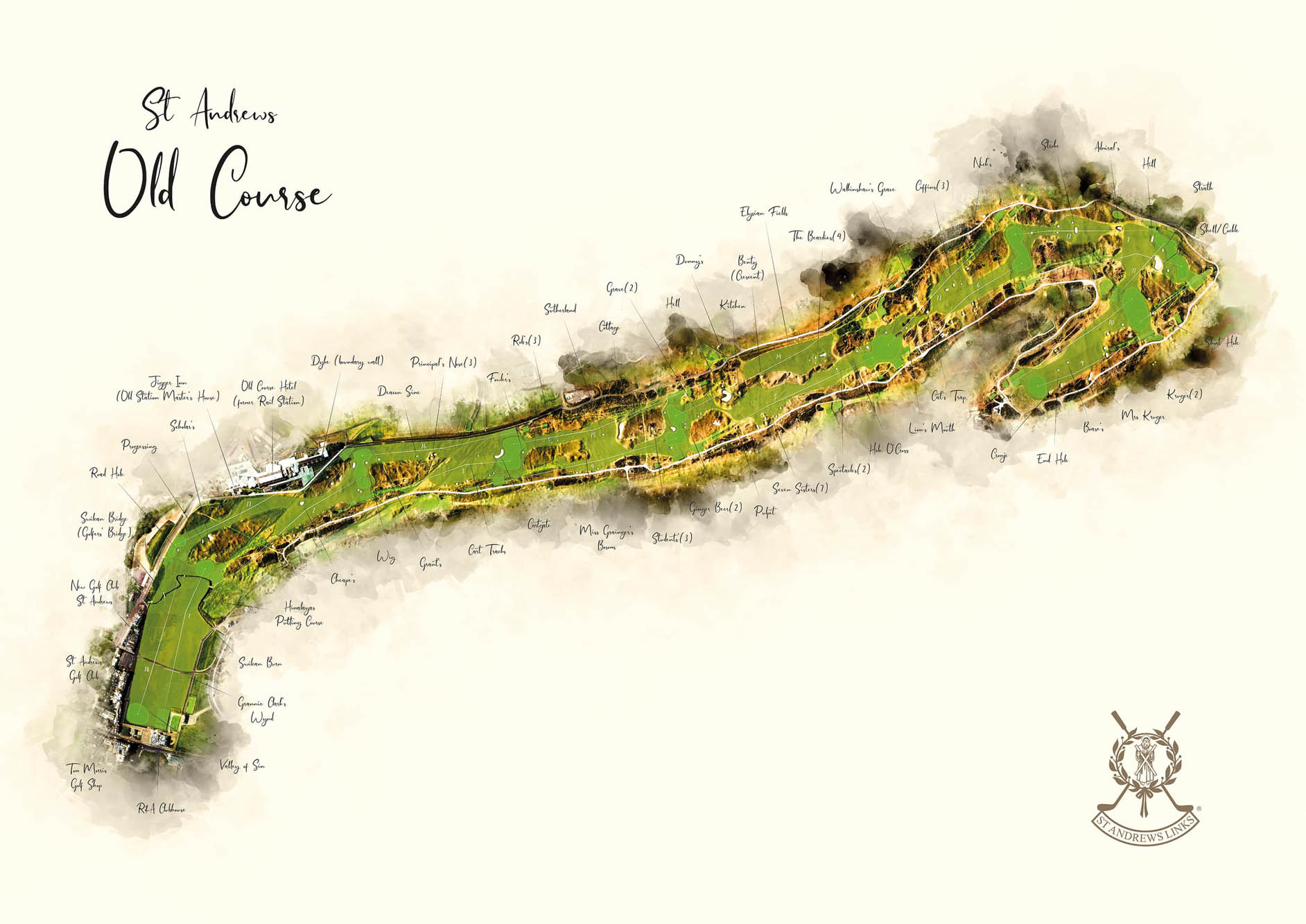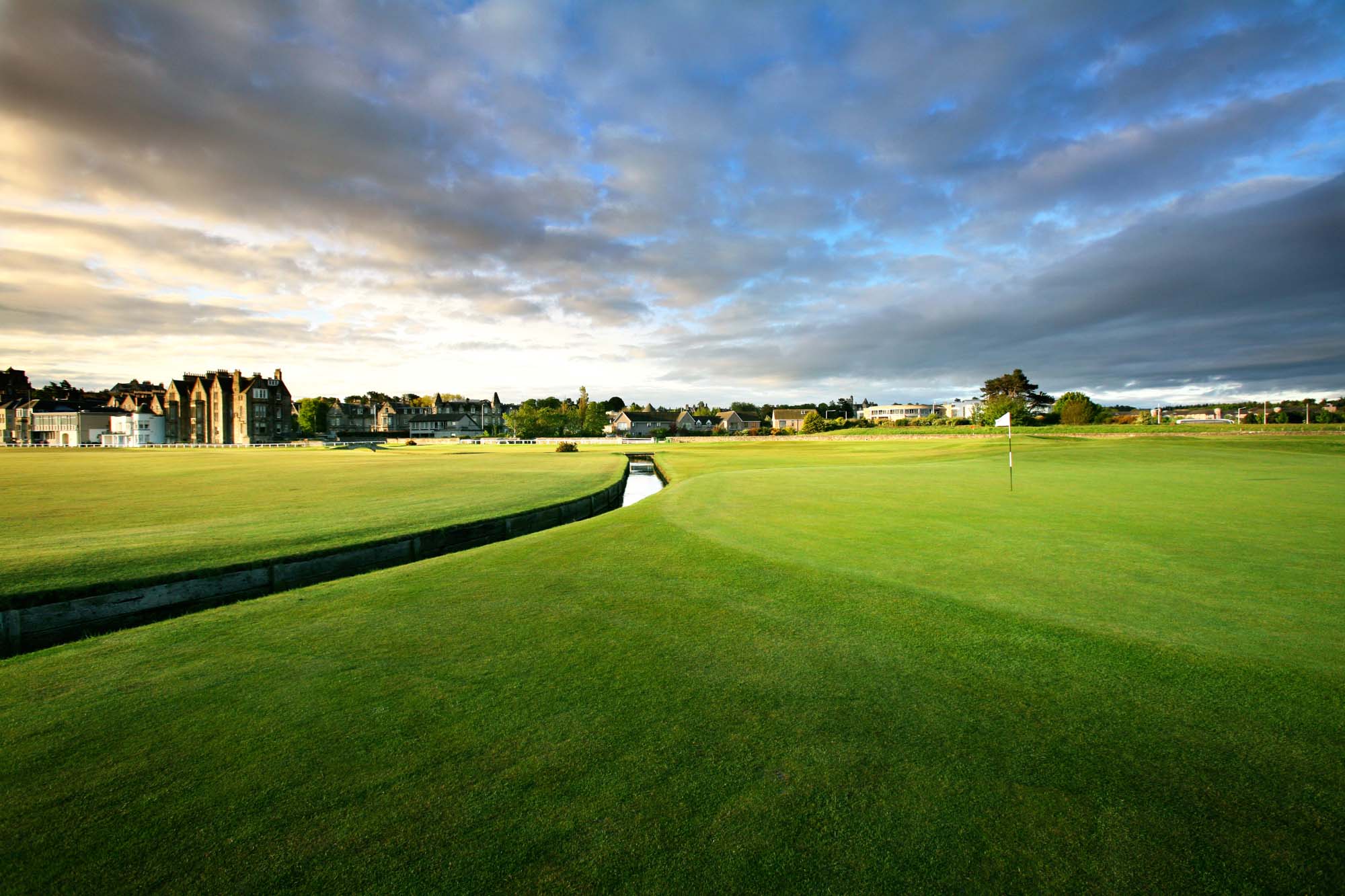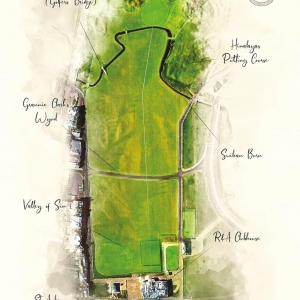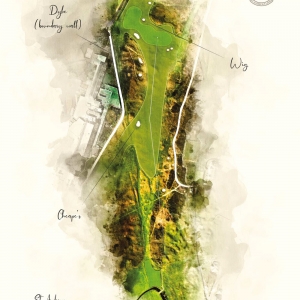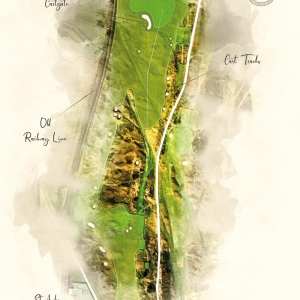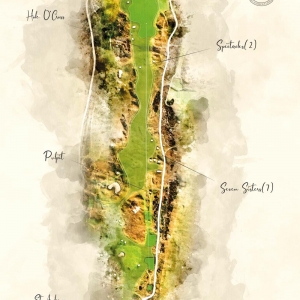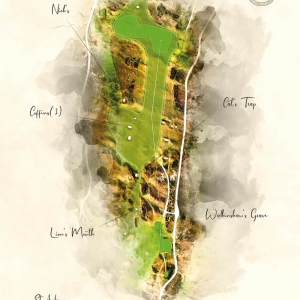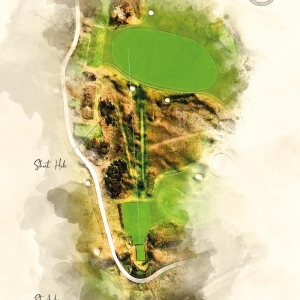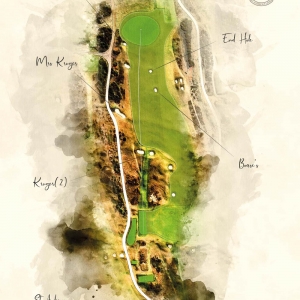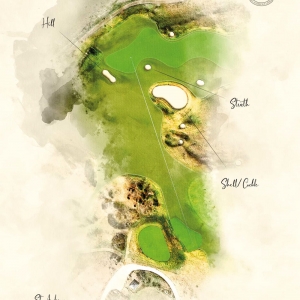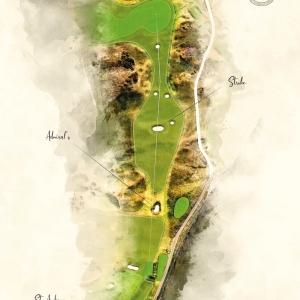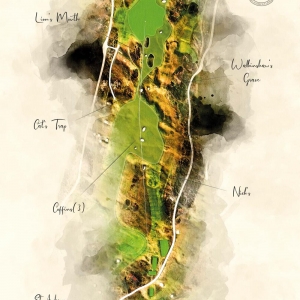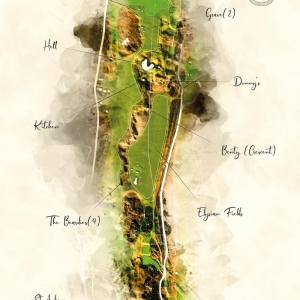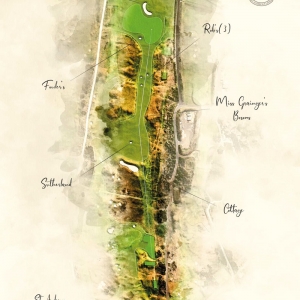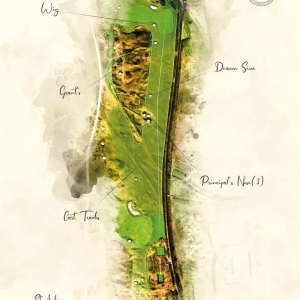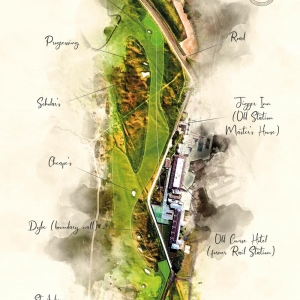St Andrews Old Course

Overview
Know as The Old Course, TOC, Old Course St Andrews, St Andrews Old, St Andrews Old Course, or simply St Andrews. However it is known, it is the greatest golf course on the planet.
St Andrews Old Course is a spiritual pilgrimage for most golfers. Despite St Andrews Old Course being the Home of Golf, it is not the birthplace of golf. It is, however, where the game evolved into what we know it today.
For golfers outside of North America, the Royal & Ancient (R&A) is the governing body that governs golf. The clubhouse is the iconic grey stone building behind the first tee and to the left of the 18th green. The R&A flagpole is a mast salvaged in 1948 from the private steam yacht 'Cutty Sark' that belonged to the Duke of Westminster.
The connections from St Andrews to golf throughout the world are innumerable. For example, many golf courses offer free tees to golfers from the Starter and in the Pro Shop. In the early days, golfers were meant to play their next tee shot from the immediate vicinity of the previous hole. Before wooden tees were invented, golfers used to build tees out of the sand, usually from the hole just played. Due to the holes becoming so deep, The Old Course began providing sandboxes from the 1880s for golfers. Even down to complimentary tees, the links to The Old Course St Andrews are countless.
Golf Course Review
For the golfer with an interest in golf course architecture, there is no place like St Andrews Old Course. Bobby Jones wrote there is more to learn from The Old Course than in playing a hundred ordinary American golf courses. In addition, Old Tom Morris, Herbert Fowler, Harry Colt, Alister MacKenzie & C.K. Hutchison have all advised or consulted on The Old Course St Andrews.
On this somewhat innocuous and barren 92 acres lies the inseparable connection between the number eighteen and golf. It is here in the 1850s that the routing was adjusted, and the total came to eighteen. Since then, St Andrews Old Course has set the standard by which the game itself is measured.
St Andrews Old Course First Impressions
From the Starter’s Hut, St Andrews Old Course looks flat. Don’t be fooled - Stan Dundan, an American who played in the 1960 Open, said the topography of the Old Course is as if Marilyn Monroe has the mumps. Remember, most greens with the exception of 1, 9, 17 and 18 are shared. Interestingly, if you add the respective hole numbers which share each green, the total is always 18!
The Only Constant is Change on The Old Course
Whilst the legend is that St Andrews Old Course has never been altered, that is far from the truth. The landscape is constantly evolving organically. Man’s touch also has not been light. For example, tee’s have been added to TOC and in some cases spill over into the adjoining courses. Such has been the effect of modern technology on golf. This represents the R&A’s effort to combat advances and keep TOC relevant as an Open venue. Greens on 4 & 14, 6 & 12, and 17 have all been altered with time. 18 is an Old Tom Morris original design.
Playing around, some bunkers appear to be in odd places - perhaps not even in play. Why do they exist? Some are relics, others are in play when weather conditions shift, and yet others are in play when the course is played in reverse, as it was intended originally. In the early days, the 1st played to the 17th green and then continued around the left loop. Now, except on rare occasions, Old Course St Andrews plays the right loop.
Due to a lack of landmarks and trees aligning yourself for the tee shots is a good test of skill. The line in for many shots is the church steeple. Your caddy will advise accordingly.
St Andrews Old Course & The Open Championship
The Open has been hosted at St Andrews Old Course more than any other. The Open has been contested 29 times and will return for its 30th time for the 150th playing to The Open in 2022.
- 13th Open 1873 Tom Kidd
- 16th Open 1876 Bob Martin
- 19th Open 1879 Jamie Anderson
- 22nd Open 1882 Bob Ferguson
- 25th Open 1885 Bob Martin
- 28th Open 1888 Jack Burns
- 31st Open 1891 Hugh Kirkaldy
- 35th Open 1895 JH Taylor (First Englishman to win The Open at St Andrews)
- 40th Open 1900 JH Taylor (First multiple winner of The Open at St Andrews)
- 45th Open 1905 James Braid
- 50th Open 1910 James Braid (First winner of 5 Opens)
- 56th Open 1921 Jock Hutchison (First American to win The Open)
- 62nd Open 1927 Bobby Jones (First Amateur to win at St Andrews and third to win The Open)
- 68th Open 1933 Denny Shute
- 74th Open 1939 Dick Burton
- 75th Open 1946 Sam Snead
- 84th Open 1955 Peter Thomson
- 86th Open 1957 Bobby Locke
- 89th Open 1960 Kel Nagle
- 93rd Open 1964 Tony Lema
- 99th Open 1970 Jack Nicklaus
- 107th Open 1978 Jack Nicklaus
- 113th Open 1984 Seve Ballesteros
- 119th Open 1990 Nick Faldo
- 124th Open 1995 John Daly
- 129th Open 2000 Tiger Woods
- 134th Open 2005 Tiger Woods
- 139th Open 2010 Louis Oosthuizen
- 144th Open 2015 Zach Johnson
- 150th Open 2022 Cameron Smith
Golf Courses Next Door
If you were anywhere else, the Eden Course, Jubilee Course, and New Course would be better known as links golf destinations. Despite some less than constructive comments about the St Castle Course has evolved to be one of the must-play new links in Fife, Scotland. If you fail to win the ballot and cannot get a tee time on the St Andrews Old Course, enjoy one of the other courses at St Andrews, The Home of Golf.
St Andrews Old Course Reviews
Clyde Johnson contributed an analysis of the 14th hole on The Old Course.
Before you play, get a copy of Scott MacPherson's St Andrews Old Course.
Enjoy Richard Pennell's accomplished write-up of The Old Course.
Momento, Souvenir, or Golf Gift?
If you've enjoyed the artwork of The Old Course, why not acquire a print for yourself?




St Andrews Old Course - Course Guide
St Andrews Old Course Guide
Burn
Do you like playing in front of a gallery? There are usually townspeople or fellow golfers in and around the first tee. Behind you is the R&A Clubhouse. Look carefully, there is a plaque of Old Tom Morris gazing over his links.
At first glance, the first at St Andrews Old Course is a rather bland hole. No bunkers and one of the widest fairways in golf. However, Granny Clark’s Wynd, a pedestrian path from town to beach, is in play. Find it and you’re not entitled to any drop nor relief. Wide fairway & no bunkers, but the burn makes up for it. Play left towards Golfers' Bridge (aka Swilcan Bridge). Play away from OB right and the green opens up. Next comes Swilcan Burn, once a sandy natural hazard, it is now a cement walled channel. Some find it easier to play a full shot in rather than try to finesse a wedge off the tight lies of these majestic fairways. The first green was placed by Old Tom Morris. It allowed play to proceed right rather than left to the 17th.
Remember, you're firing at the white flags out and the red flags in. This is especially important when you get to holes 7 & 11.
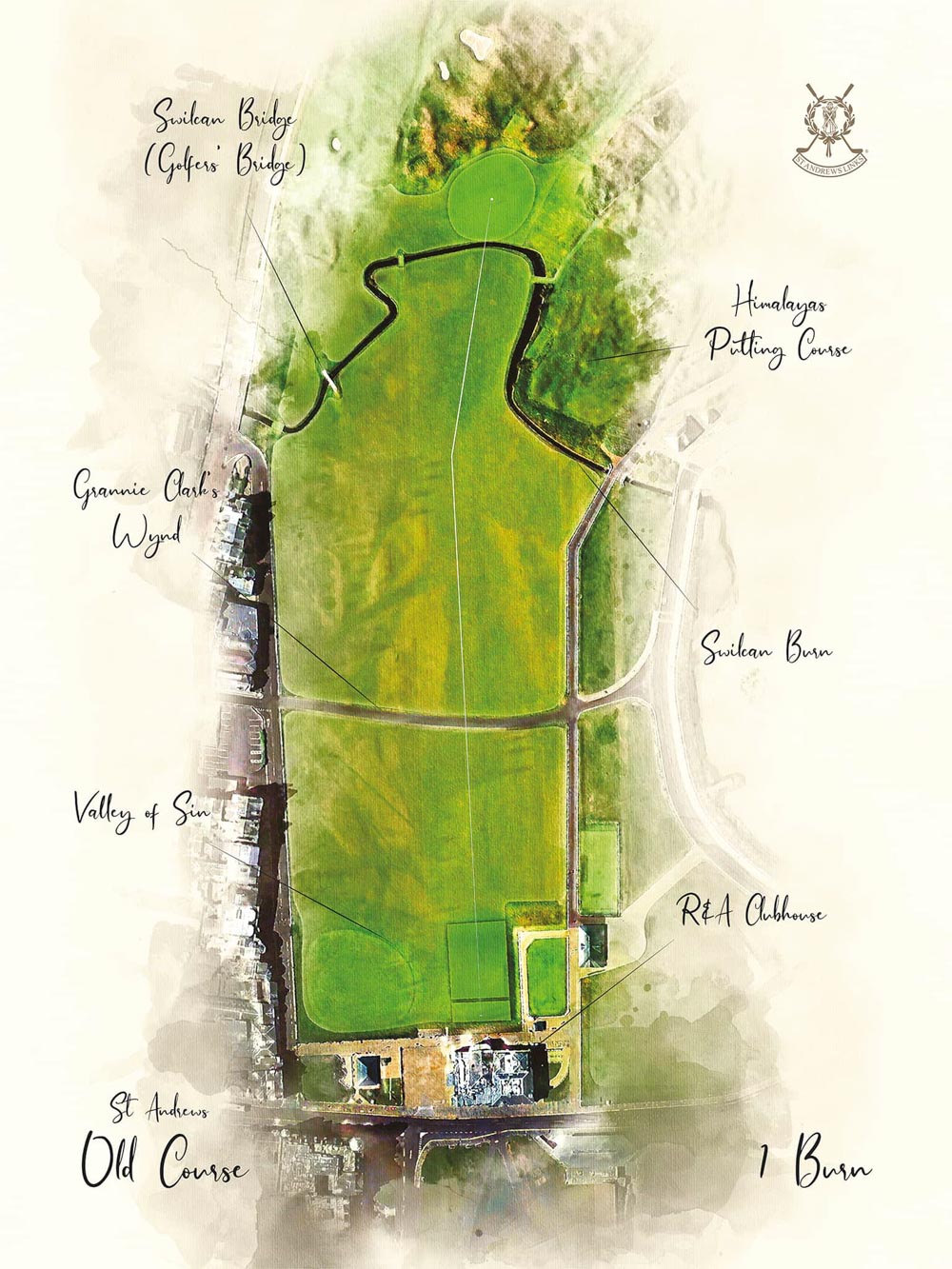
Dyke
This is a sleeper and classic risk and reward hole. It is considered as one of the best on the course amongst many well-known architects, but it escapes without much notice from the common golfer.
The ideal line is the right-hand side of the fairway. Cheape's bunker guards the left-hand side of the fairway. The further right you place your tee shot, the more the green opens up. The safer tee shot is left but the further you go left the less you have to shoot at for your second. The preferred approach shot is to land it on the green as opposed to playing the run-up. Pins are usually on the top shelf for championships at St Andrews Old Course.

Cartgate Out
Another classic risk and reward hole similar to the second. Left is safe but a harder approach shot awaits. The right side of the fairway is preferred as the green will more gladly accept a running shot, in contrast with the strategy of the second. This is especially true if there is a front pin.
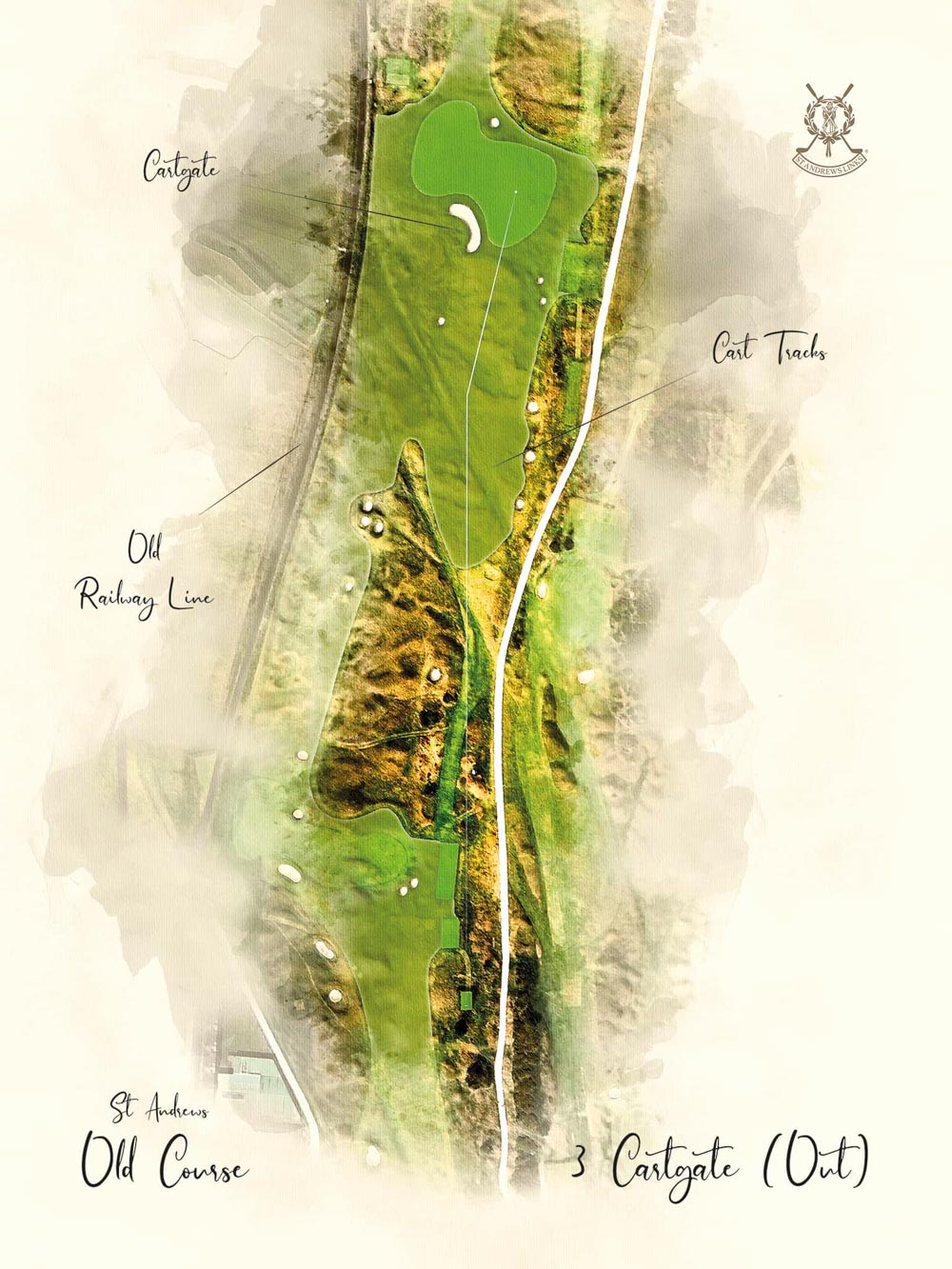
Ginger Beer
Your first and most important task is to find the fairway. Left is longer but wider and you need to find the plateau. If you do you have a better visual. Right is narrow but you have a better line in, although with less optics. Another give and take hole, there is no one option which gives you everything. The dominant feature is the large pimple short of the green. Historically unnamed, it is one of the most prominent and unique design elements on St Andrews Old Course. Recently, Jasper Miners uncovered a drawing with the feature named "The Elephant." Perhaps this is where Alister McKenzie derived the name for his buried elephant at Augusta National?
The hazard named "The Students" derived its name from those students who played the first 4 holes OUT and would turn back to play the last 4 holes IN. Perhaps the greatest short course in the world, certainly the greatest 8 hole course in the world! This hole is also the backdrop of the famous painting by Charles Lees named The Golfers – A Grand Match Played Over St Andrews Links in 1841.
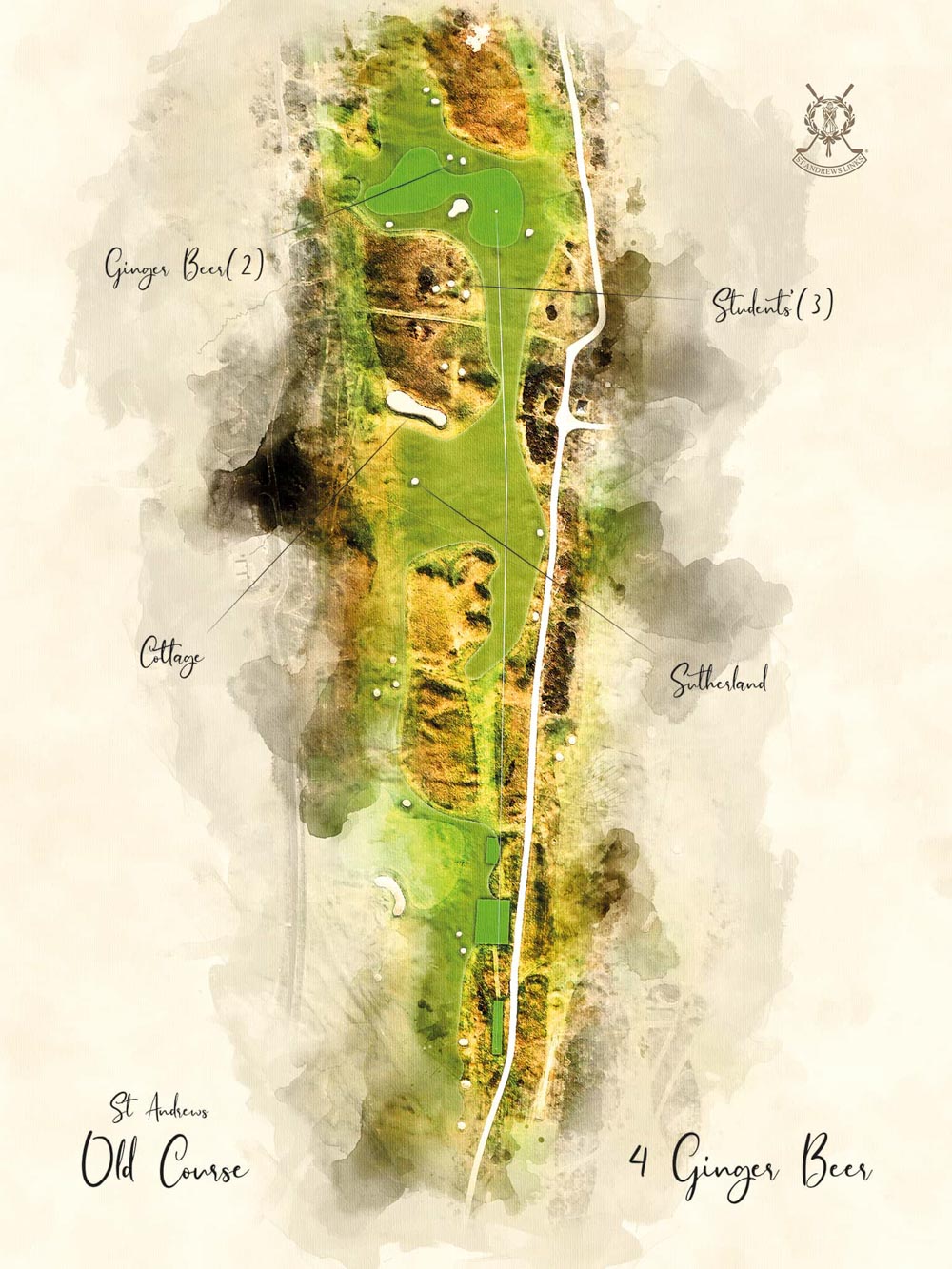
Hole O'Cross Out
How big are the greens at St Andrews Old Course? To hand cut this double green serving 5 and 13 will require the greenskeeper to walk 3.5 miles! Another indication that you will come across are sprinklers in the greens themselves as opposed to the perimeters. Once you reach the green look for the red flag. Is it on the left or right side? Note this and remember as it will dictate your strategy on 13 coming in!
On the 5th fairway, you will notice one of the March Stones. These were set in the ground at one time to show the boundary of the links. The large G indicates the golf side!

Heathery Out
The marker post or even left of it is the line. Too far left and you’ll find Coffins – a series of 3 bunkers that will take a shot from you if found.

High Out
This is where it can go wrong for you if you are ill-informed or don’t have a caddy. Large double green is an original Old Tom Morris creation. Remember that white is the flag you’re shooting for. It’ll be found on the right-hand side of the green - not the left! This green is the highest point on the course. The wind will affect your approach here more than usual.

Short
This is the beginning of 'The Loop' - a sequence of three holes that will ultimately bring you back in. It is the breather before a significant stretch of tough holes. The wind is the biggest factor to consider. How to hold the green on which tilts from front to back is the second.
You should be looking at picking up some shots here… 8, 9 & 10 are considered the easiest holes on St Andrews Old Course.
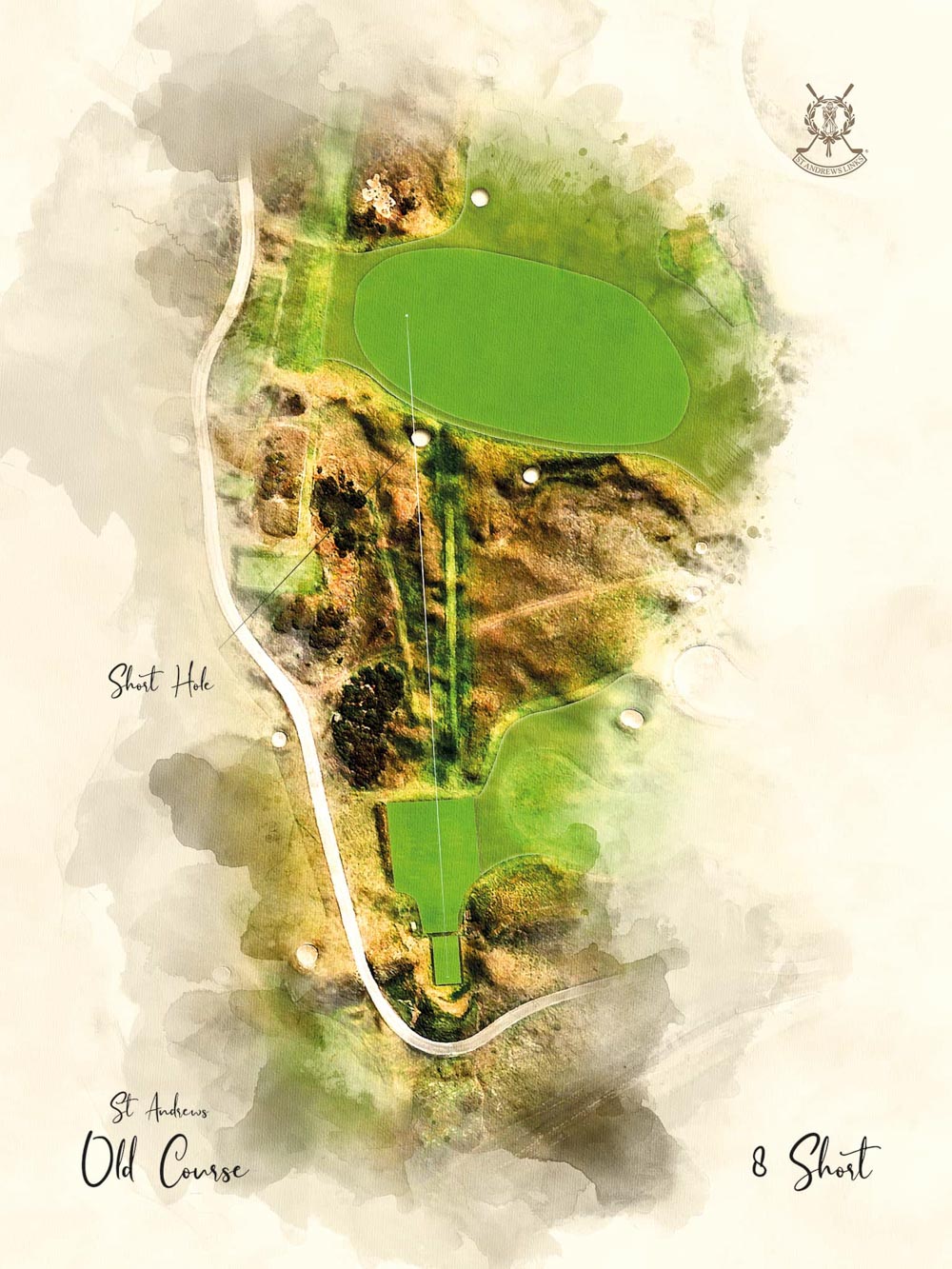
End
End’s bunkers are named after Boer War veterans. A rare standalone, single green differentiates the 9th. It is one of only four on the course. The others? One, Seventeen & Eighteen.
The similarities don’t end there. Nine & Ten are reminiscent of One & Eighteen – both share a fairway and appear to be seemingly innocuous.
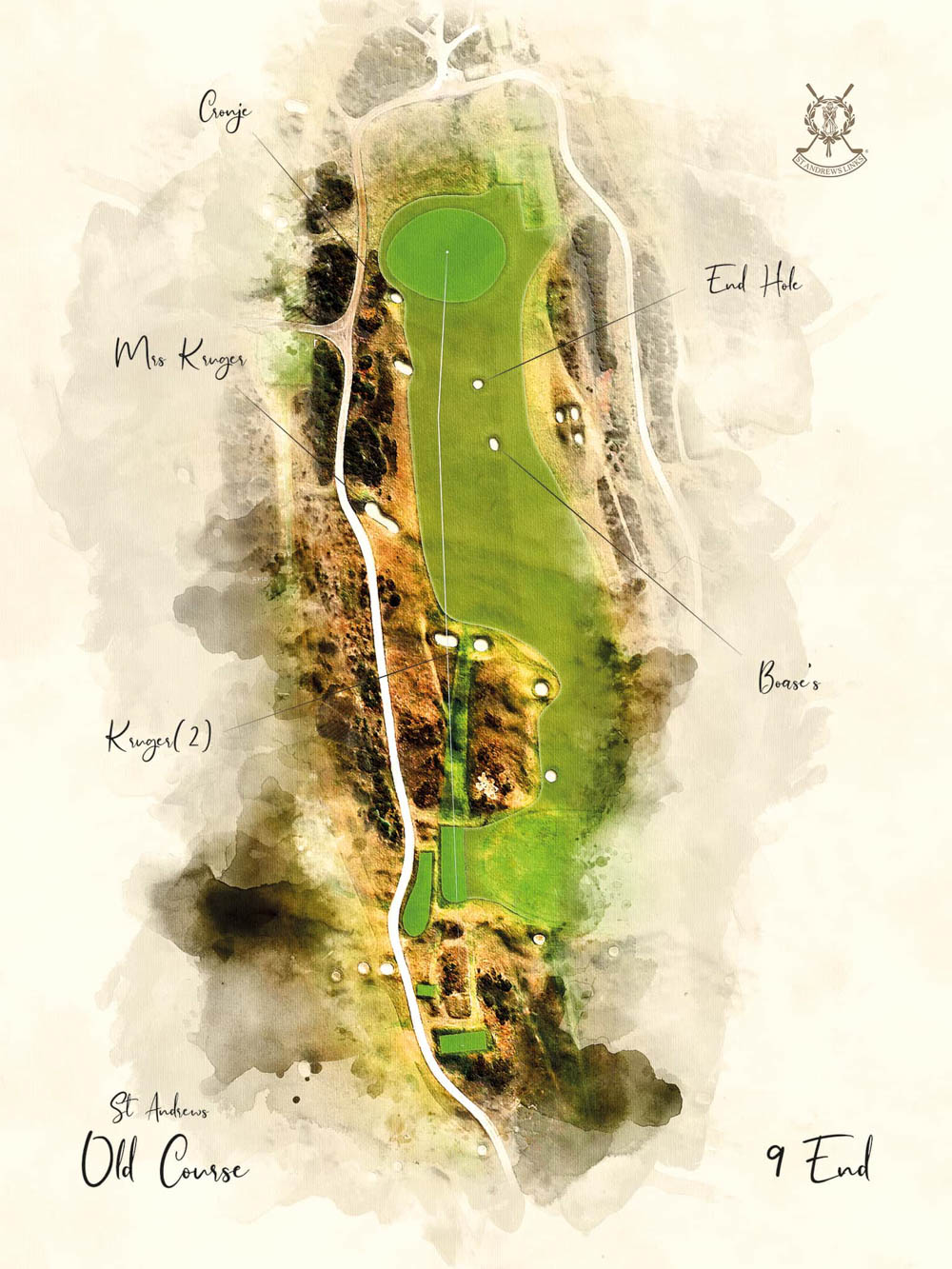
Bobby Jones
Named Bobby Jones in 1972 after his death in 1971. This was the last hole named at St Andrews Old Course - the highest honour bestowed on St Andrew's adopted son. Look closely and you’ll find another of the March Stones.

High In
Known officially as High Hole. It is known as Eden in golf course architecture and design circles. The name is derived from the Eden estuary located behind the green. Whether you realised it or not, you’ve probably played a template of this hole before. It even served as the inspiration for Alister MacKenzie when designing the 4th at Augusta National GC where the Master’s is played yearly. Hill Bunker ended Bobby Jones chances of the Open in 1921 and it will derail your round if found.
Look closely and you’ll find another of the March Stones. Another bit of trivia and golf history – it was here that the first tin cup was used when a “sheet iron case was put in to keep it in proper shape.”
Remember you’re seeking the red flags now!

Heathery In
Unseen danger lurks. Trust the distances and try to carry the hidden bunkers. Played in reverse, the bunkers are visible. This hole also has one of the narrowest greens on the course. Admiral's Bunker is so named, as legend has it, because one Admiral Benson fell in while looking at a young American lass in a red miniskirt and white shoes.
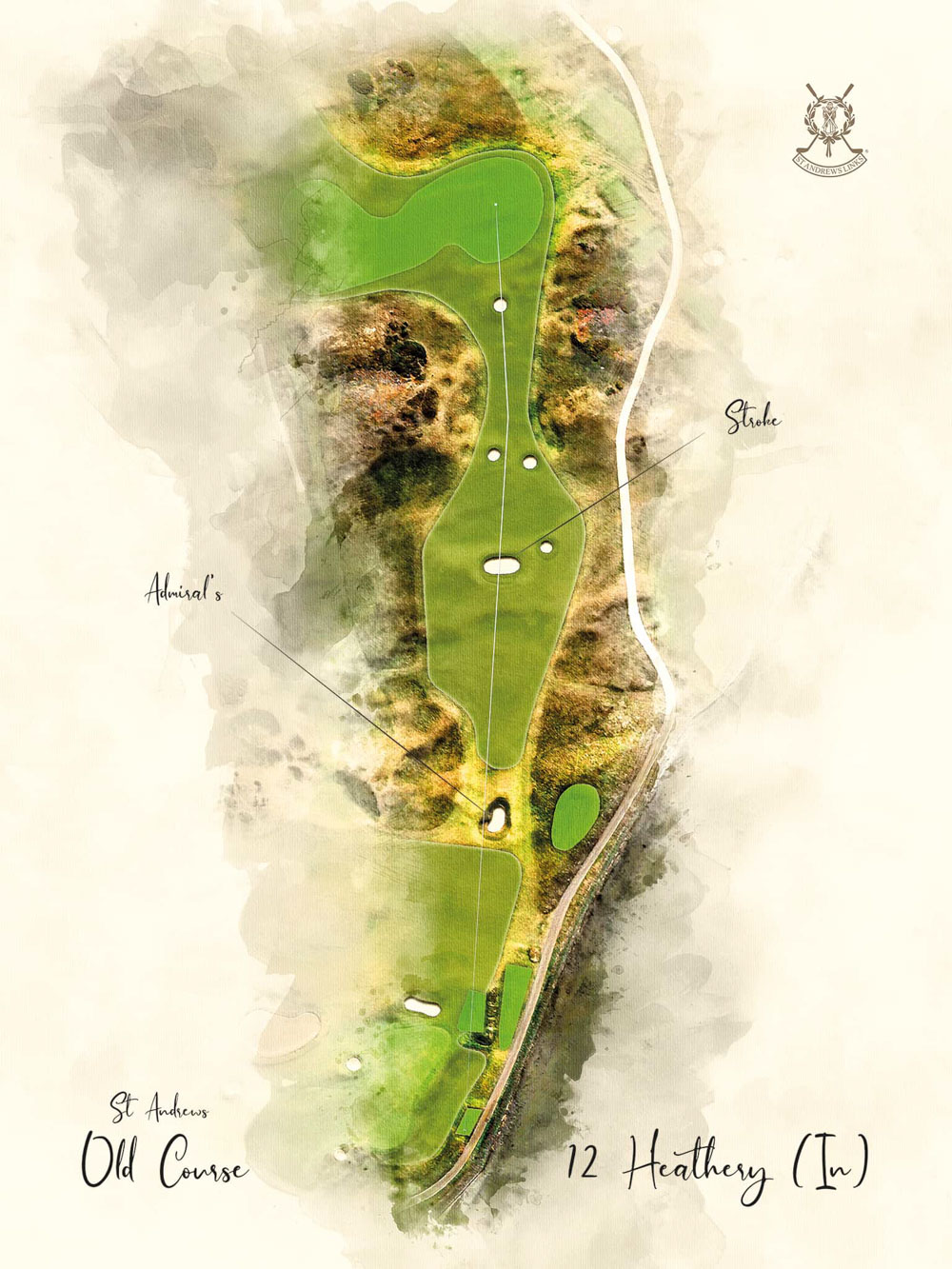
Hole O'Cross
Famed golf course architect Tom Simpson called this hole the best in the world. The structure and architectural elements the hole provided a basis for hole designs at Sunningdale, Pine Valley, and Cypress Point. They, in turn, provided the inspiration for many others after them.
As you approach the 13th green look for a small raised (4x6m) area in front of the pot bunker guarding the front of the green. It is one of the earliest teeing grounds, probably built by Old Tom Morris, still in existence despite not being used. Before you leave the green… read the hole report for 14!
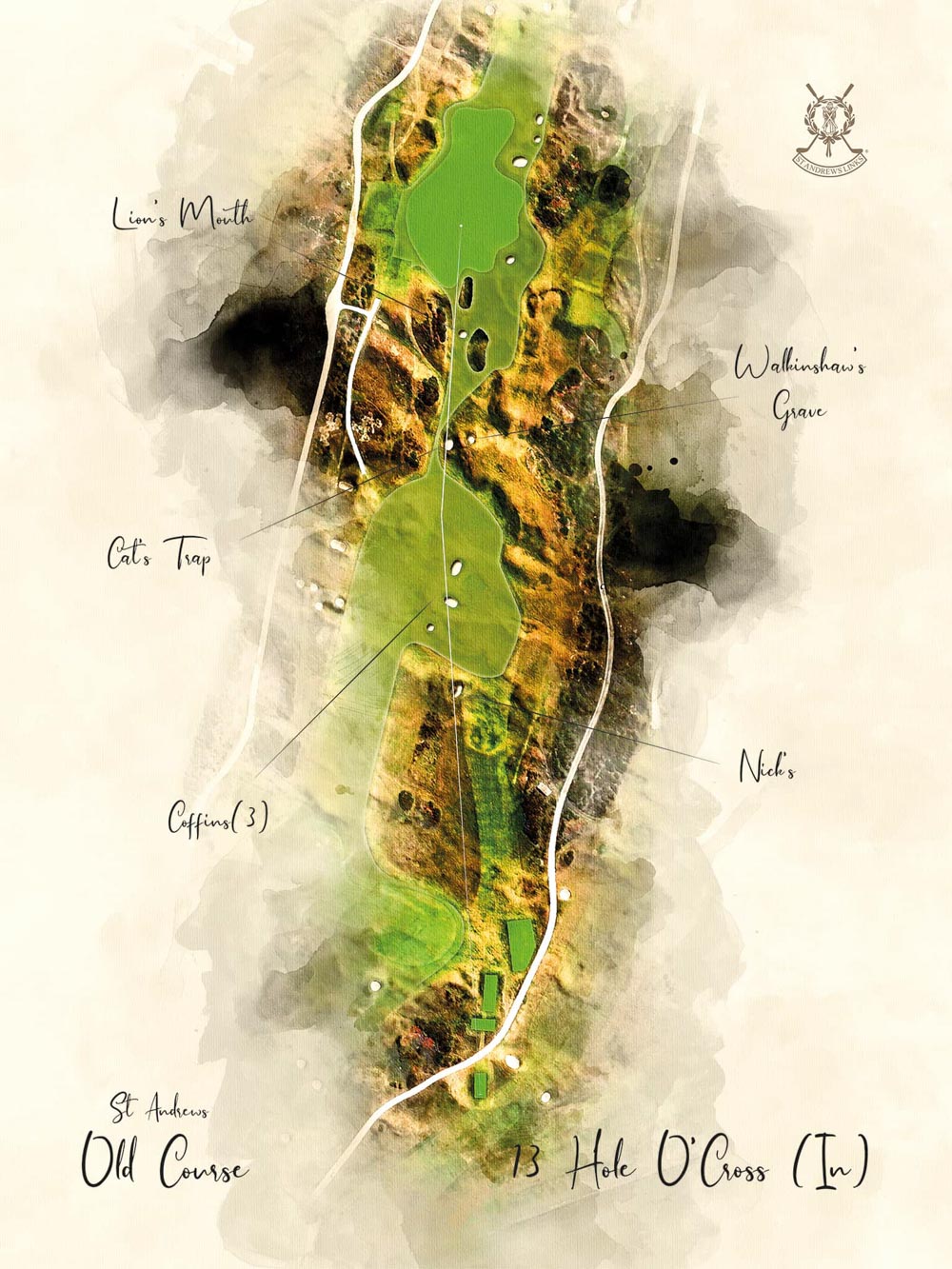
Long
From the 13th green look towards the 14th green. This would have been the line from roughly 1875 to 1932. From this line, it is easy to see the options which made Long so good for so long.
It is now a single option from the tee. Previously you would have had to play towards it and alongside it. This new tee, more than any other, has changed the play of the hole more than any other at St Andrews.
Play away from O.B. just to the right of Beardies and then over Hell Bunker to the green. Aim for the tallest spire you can see off the tee. Don’t feel upset if you fail to score on this hole... Jack Nicklaus carded an 8 and 10 here during Open Championships.

Cartgate In
Aim for the 2 bunkers that are visible from the tee. There is actually 3 but only two are visible. The approach shot needs to be carried to the green as the ground before the green is broken.
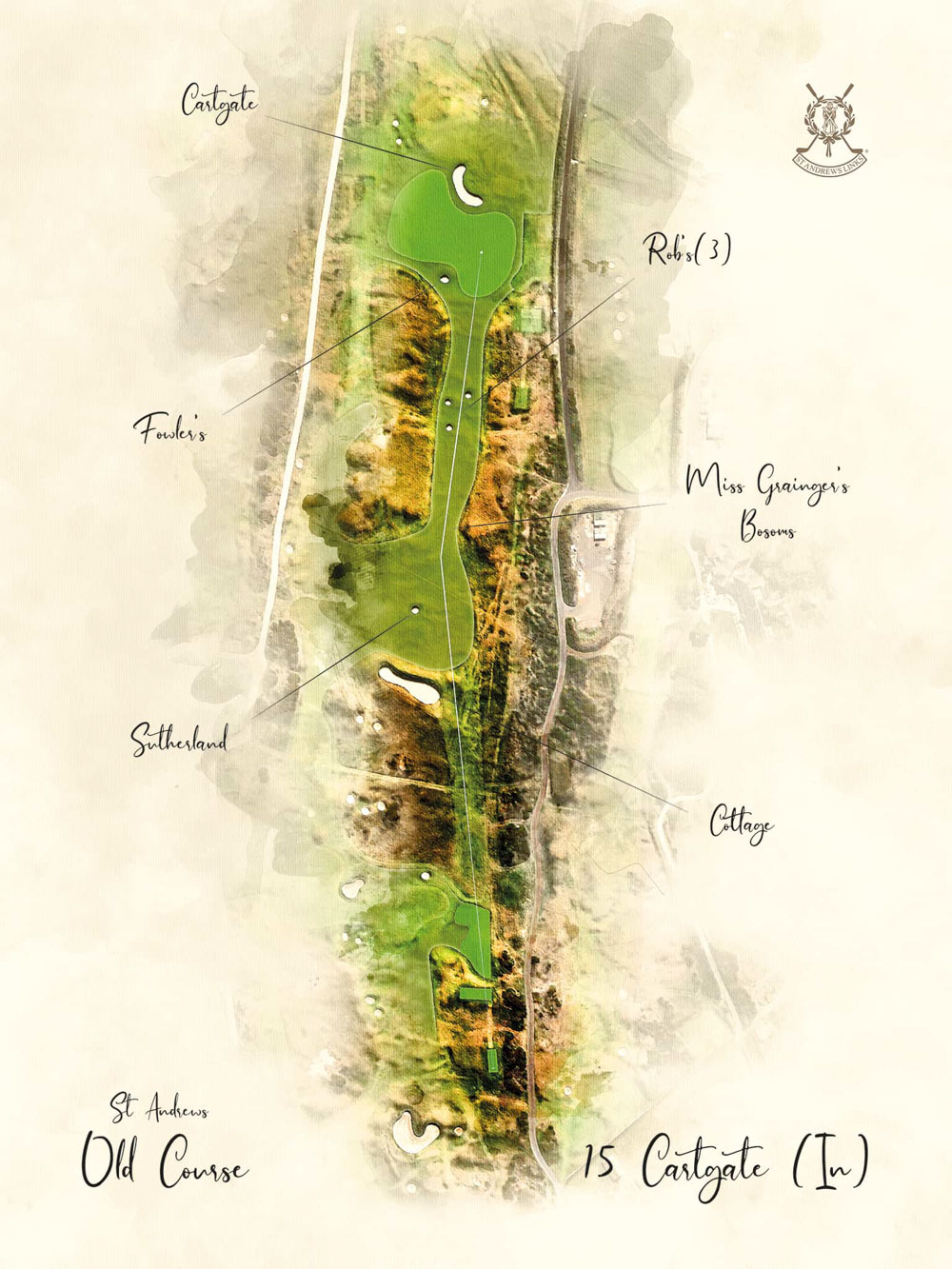
Corner of the Dyke
Avoid the temptation to go right. The reward is not worth the risk with OB so close. As well, the bunkers on the left of the green are brought into play when attacked from the right fairway. Play left and be happy with par - you haven’t lost a shot.

Road
The Road Hole is one of the most famous holes in the world it is also a template for holes worldwide, it served as a template for 5th at Augusta National GC.
The railway station used to sit where the hotel now sits. The Jiggers Inn was the original station masters house. Now removed, the original train line now demarcates O.B. creating the right-side boundary for holes 16 & 17.
Until 1964, the Road Hole was a par 5. If you’re lucky enough to take a four, remember that was considered a birdie in the Open until only recently!
The infamous Road Hole Bunker is also known as the Sands of Nakajima. After reaching the green in two, the Japanese Open contender putted into the bunker and took 5 shots to get out, ultimately holing out for a nine!
The Himalayas or the Ladies Putting Green is well known. A Children’s Putting Green also existed once - across the road from the seventeenth green and behind the wall.
Have a go at the hero shot - the glass in the hotel has bulletproof glass!
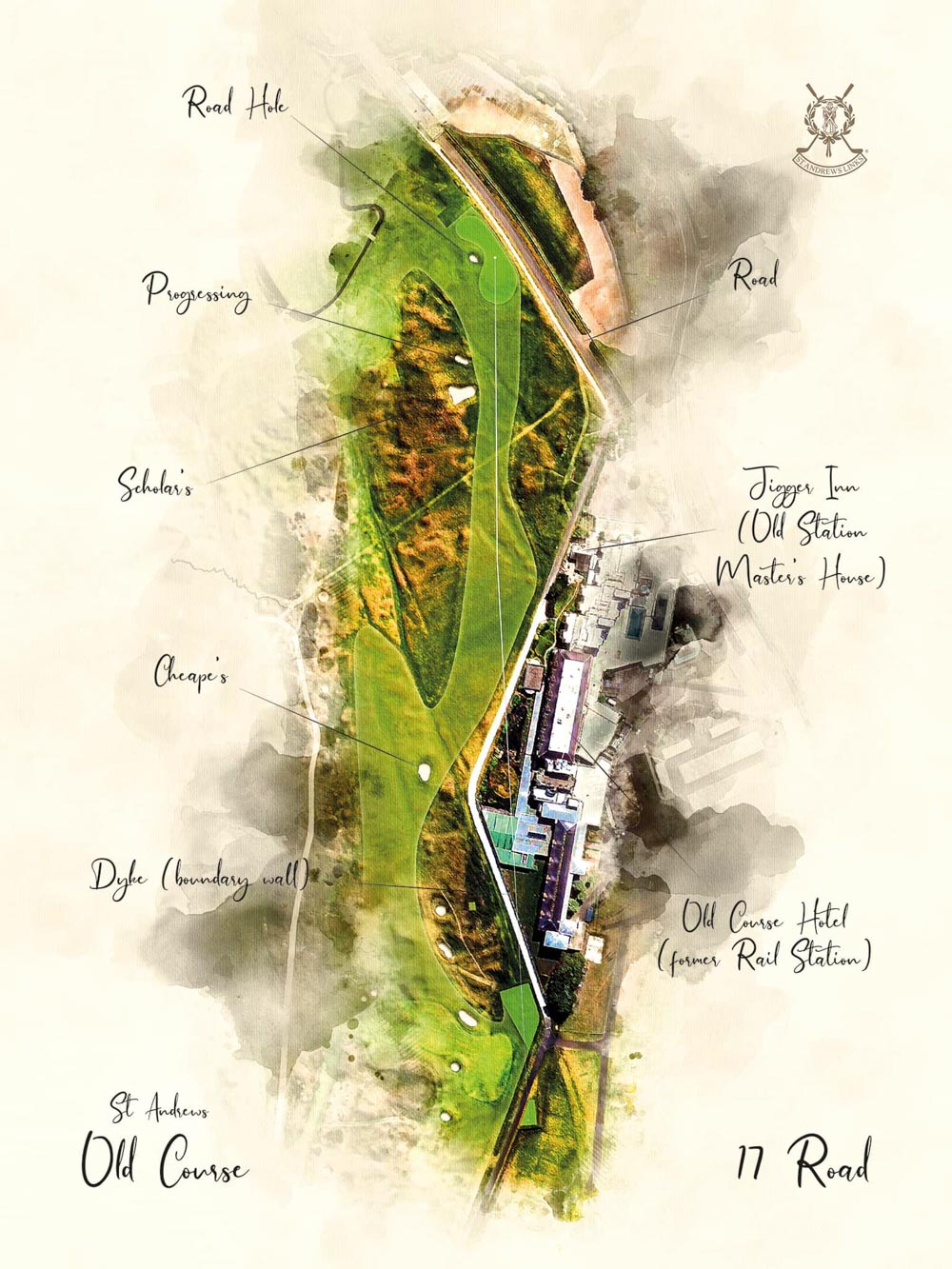
Tom Morris
The 18th at The Old Course St Andrews served as the inspiration and template for the 7th at Augusta National GC.
The aim point is between the monument to the right of the R&A clubhouse (called locally the Scotsman Lying His Back) or the clock on the clubhouse in. A drive of 250 yards will put you just over Granny Clark's Wynd and leave you about 100 yards in.
It is now bunker-less, but a grassed hollow in the fairway is a silent witness of Halket’s Bunker.
The green, 100% man-made, was positioned by Old Tom Morris in 1866. It was previous used as a waste fill and cemetery. The Valley of Sin in front seems to factor continually in major tournaments.
The 18th is the only hole on the back nine on St Andrews Old Course which sports a white flag. This is so you can see it against the red brick hotel which stands behind the green!
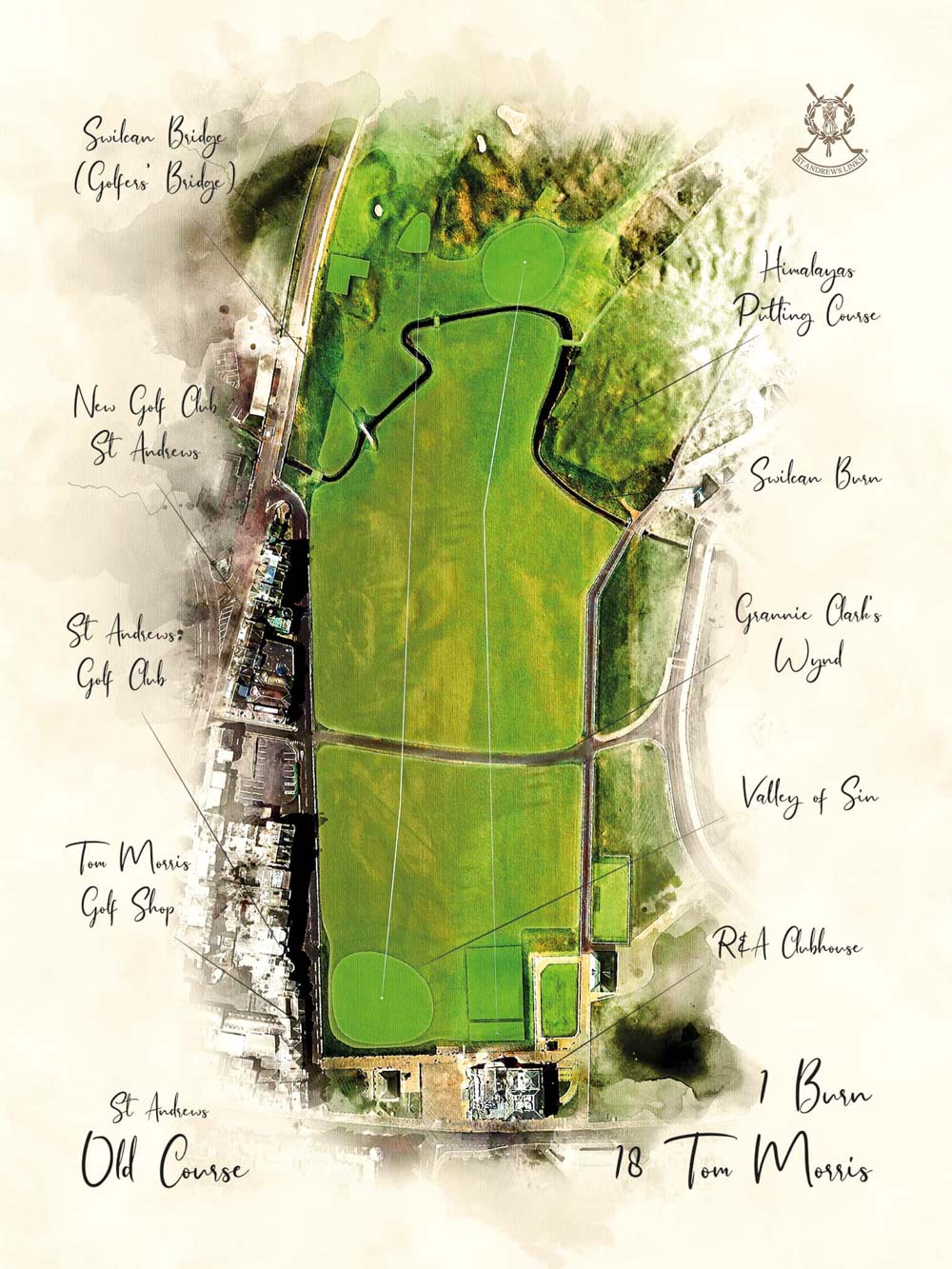
St Andrews Old Course - Videos
Below is a selction of course related videos.
Erik Anders Lang & Crew at The Old Course St Andrews
Cookie Jar Golf's The Old Course at St Andrews: Old Tom's Trails
The Story of St Andrews - Iona Stephen
Spirit of St Andrews - Sam Cooper
How to Play the Old Course with Steve North
NLU Tourist Sauce The Old Course at St. Andrews
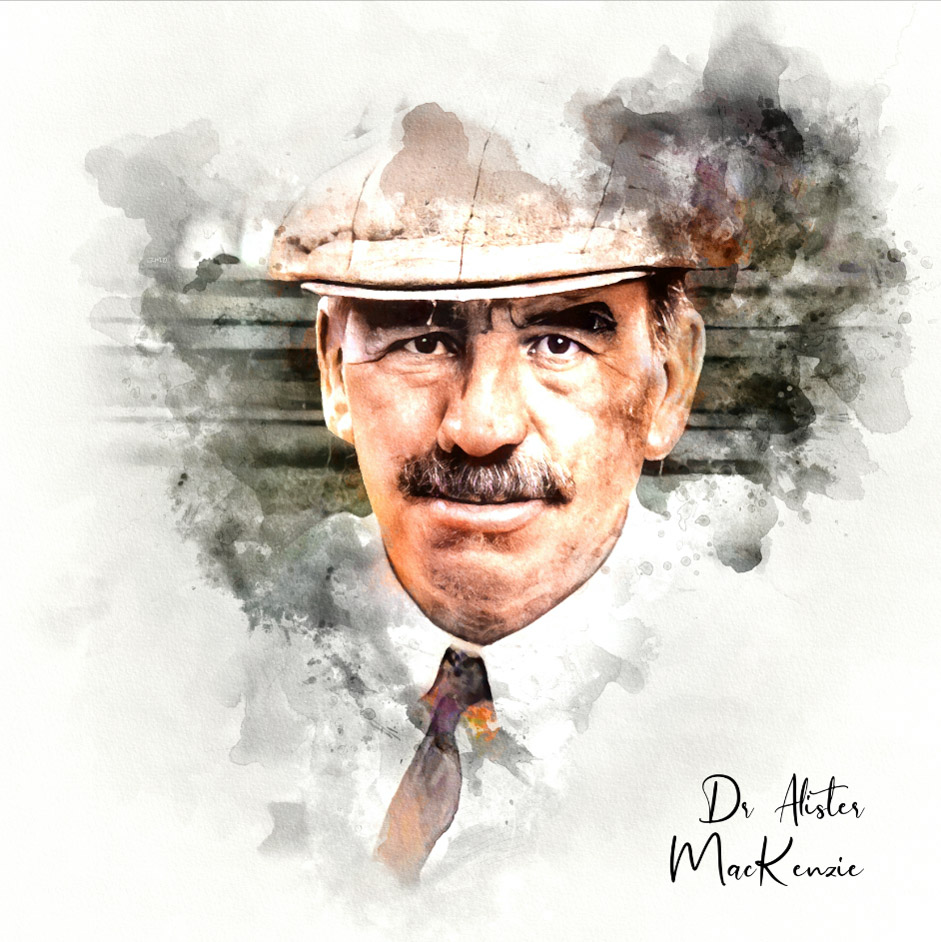
Featured Architect: MacKenzie, Alister
As taken from his book, Golf Architecture, Alister MacKenzie felt the following were essential: The course, where possible, should be arranged in two loops of nine holes. There should be a large proportion of good two-shot holes and at least four one-shot holes. There should be little walking between...

